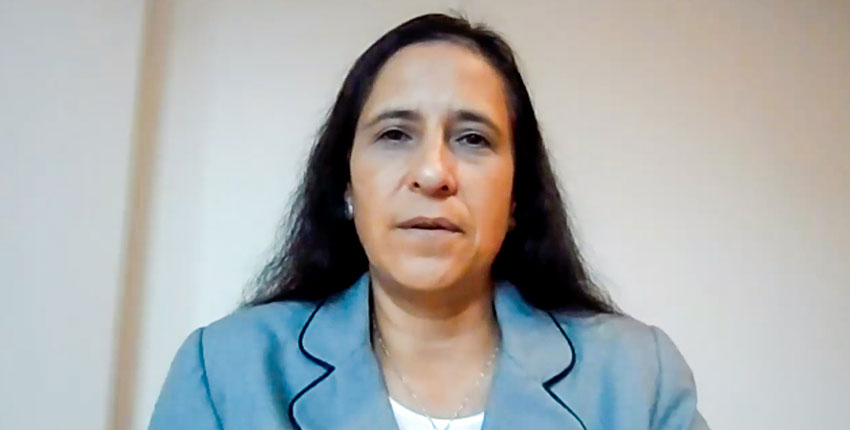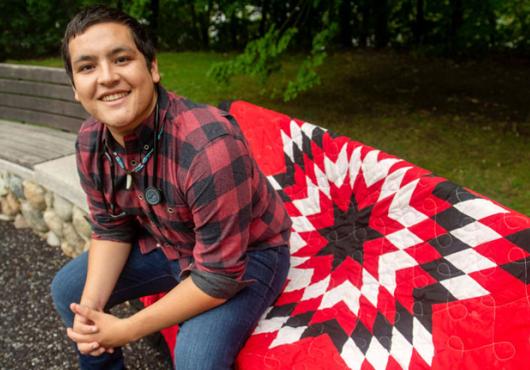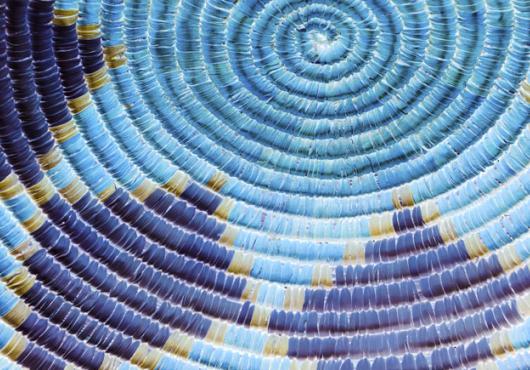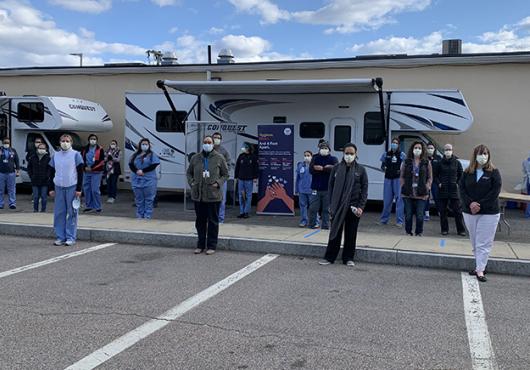
In 2018, there were 2,570 physicians in the U.S. who reported identifying as American Indian or Alaska Native (AIAN)—just 0.3 percent of all active physicians—according to data compiled by the Association of American Medical Colleges (AAMC). Similarly, in 2018-2019, only 0.2 percent, or 39, students who matriculated to U.S. medical schools self-identified as AIAN.
Nicole Stern, an enrolled member of the Mescalero Apache Tribe of New Mexico and a physician, is among those working to increase the number of American Indian and Alaskan Native medical students and physicians in the U.S. She is the first member of her tribe to become a physician, and she works part-time as an urgent care clinician in a multispecialty practice in Santa Barbara, California.
A Commonwealth Fund Fellow in Minority Health Policy at Harvard University, Stern is a research fellow in global health and social medicine at Harvard Medical School, and a candidate for a master of public health degree, with a focus on health management, at the Harvard T.H. Chan School of Public Health.
Harvard Medicine News recently interviewed Stern about her journey into health care, her commitment to promoting greater health equity for American Indians and Alaska Natives, and her efforts to increase diversity at medical schools.
HMNews: Why did you pursue a career in medicine?
Stern: I think the biggest reason had to do with my commitment to making an impact within and for American Indian communities within the country. Seeing American Indian health care issues and disparities, and delivery problems to small rural reservation areas, as well as struggles for urban American Indians and Alaskan Natives.
My father is a retired physician from the University of Arizona, and he practiced neurology for over 30 years. He was in the National Health Service Corps in the Indian Health Service prior to that, which is how he met my mother in New Mexico. He was very influential and he very much encouraged me, but my parents didn’t necessarily say that I needed to be a doctor.
HMNews: Had you met other Native American physicians before medical school?
Stern: The opportunity to meet American Indian physicians in college came when I participated in an Association of American Indian Physicians’ pre-admissions workshop, which helped American Indian students prepare applications to get into medical school.
I had also met American Indian medical students during my undergraduate years at Stanford. Stanford had a very strong Big Sib/Lil’ Sib program at the time, where they partnered an American Indian medical student with an American Indian premedical student.
We still maintain very close contact. My Big Sib is now a pediatric anesthesiologist. It was a great match and connection; she supported me through very difficult times when I took my first courses in biology and chemistry, when I was afraid that I was not going to be able to make it. I went to a public high school and didn’t quite have the same academic rigor in my courses as some of the other students coming from preparatory schools, so I was very humbled while I was at Stanford and struggling with those first courses. I was encouraged through this Big Sib to just keep going: “Keep going, you can do it. Think about the ultimate goal at the end.”
HMNews: Why is it important to increase diversity at medical schools and in the health care workforce?
Stern: Most minority research shows that people from minority backgrounds who work in minority communities are more effective. They’re part of that culture, that environment.
For American Indians and Alaska Natives, I think we definitely do need more of us in [health care], whether physicians, nurse practitioners, physician assistants, physical therapists, or dentists. You name it. Any other of the allied health fields as well.
When people see their own people in those positions, there’s just that sense of understanding, that respect, that acknowledgment, that trust. American Indians have historically faced so much distrust from the federal government, that it’s now, I think, time to really build up our own people to help improve the overall health care for American Indians in rural or urban communities.
HMNews: Tell us about how you worked with the Association of American Medical Colleges to include American Indians and Alaska Natives in medicine.
Stern: In 2011 and 2012, I had the opportunity to collaborate with the AAMC and Building the Next Generation of Academic Physicians. This initiative is geared towards encouraging people underrepresented in medicine to go into health careers, especially academic medicine careers.
In 2012, during our annual meeting of the Association of American Indian Physicians (AAIP) in Anchorage, Alaska, we did some focus groups with medical students, residents, fellows, and practicing physicians to get feedback from them on why they chose to go into academic medicine or into community health or private practice, and their decisions along the way.
Over the last six years, I’ve served on the Committee for Student Diversity Affairs as the liaison from the Association of American Indian Physicians, which is part of the larger umbrella at AAMC of the Group on Student Affairs, and is very much geared towards working with the student affairs departments at each individual medical school in the United States, to help students along on their pathway, especially focusing on people with diverse backgrounds.
In the area of physician workforce development, with the AAMC and the AAIP, we published Reshaping the Journey: American Indians and Alaska Natives in Medicine. This landmark paper profiles different areas of the country where institutions have been successful at recruiting and retaining American Indian and Alaskan Native students into their medical schools. It talks a lot about cultural issues and how important that piece is, and about support and mentorship.
One example is taking the white coat ceremony that the average medical student goes through, but then putting the American Indian cultural piece on that is so important, and feeling that connection to the community. For example, when I entered medical school at the University of Arizona, a special ceremony was held for the incoming American Indian students. The same thing occurred during graduation. This ceremony was organized by a local American Indian physician and was run by a local American Indian healer. It was a special ceremony where all of my family was invited as well as select medical school administrators and staff.
There is more diversity and more understanding around the country by medical schools and institutions about the value that we bring, and not only our American Indian culture. We also need more Black men in medicine. We need more Pacific Islanders, Native Hawaiians, Puerto Ricans, other traditionally underrepresented in medicine groups.










